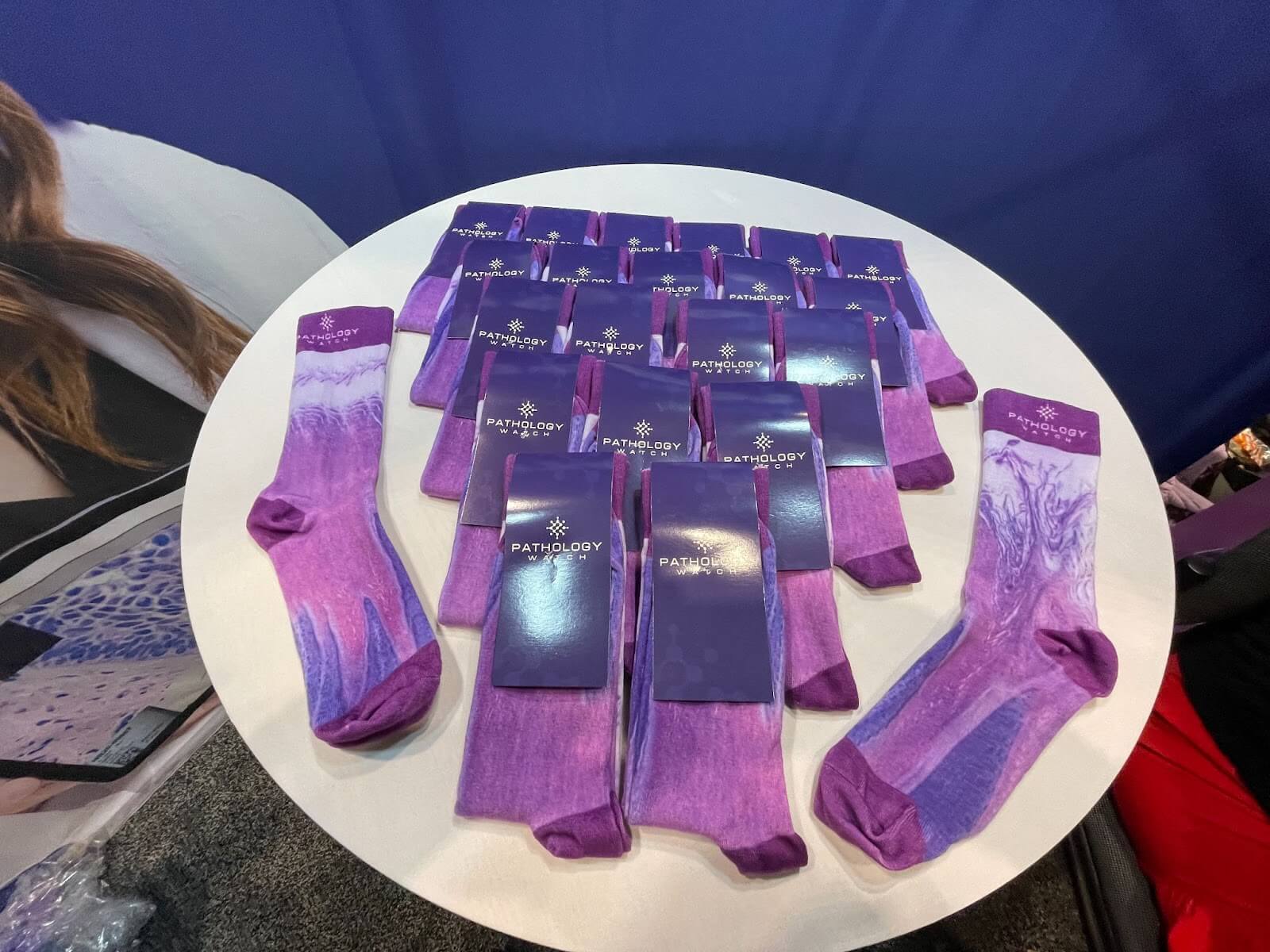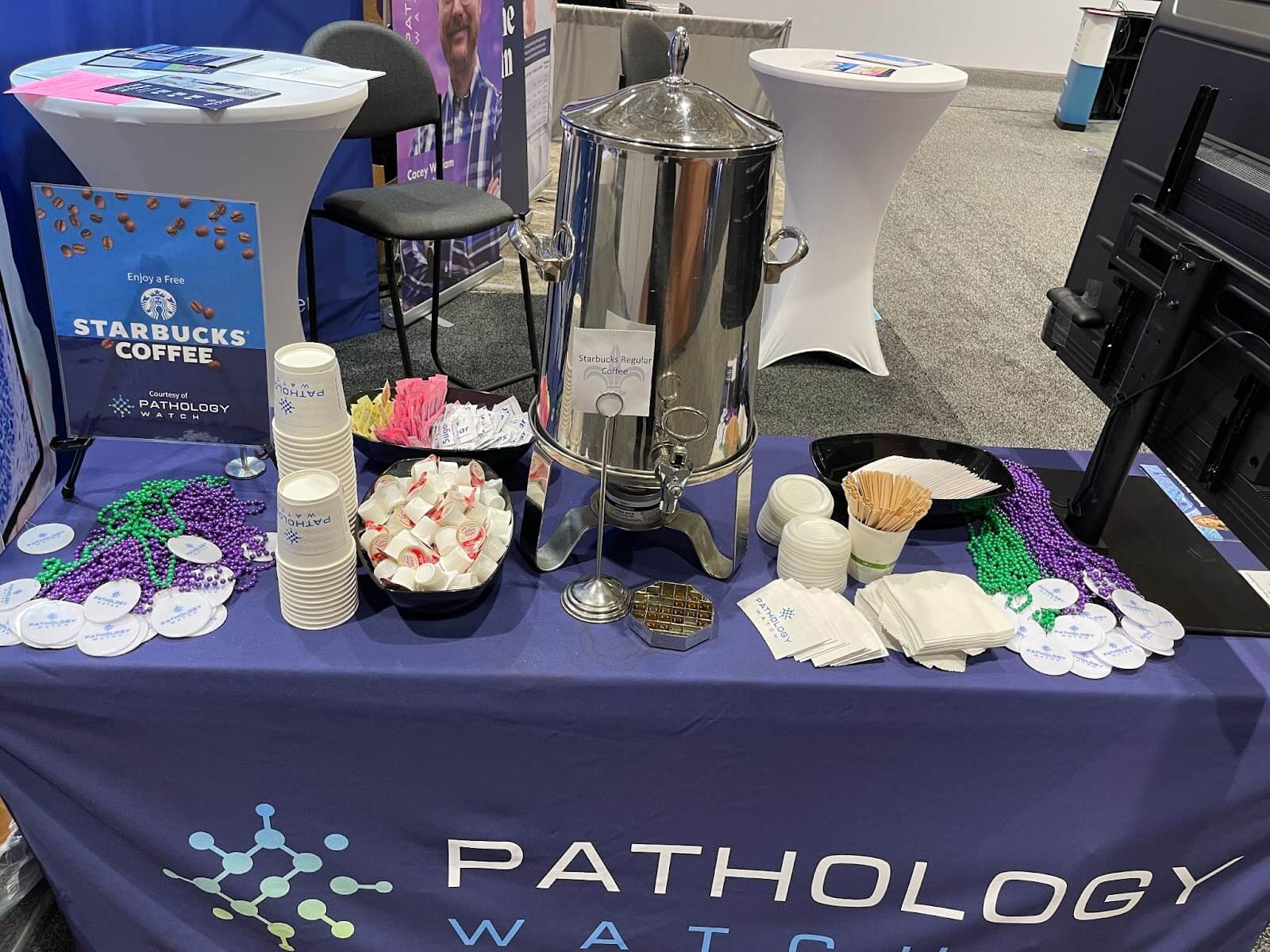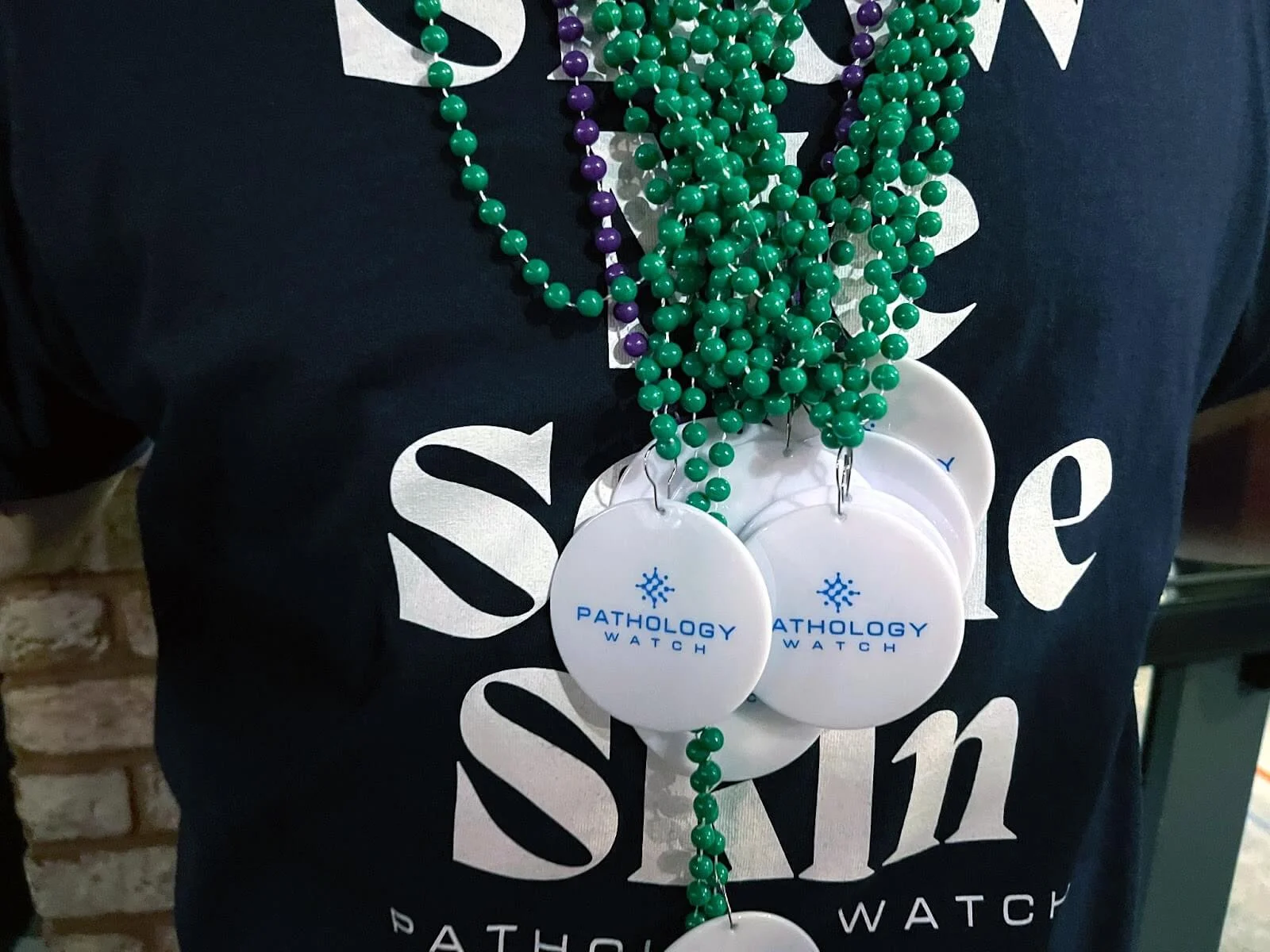Apr 24, 2023 | Dermatology Practice, Digital Dermatopathology, Pathology Business
By April Larson, MD
Thirteen is shaping up to be a very fortunate number for digital pathologists in 2023. Thanks largely to the efforts of the College of American Pathologists (CAP), the American Medical Association CPT Editorial Board developed 13 new Category III digital pathology digitization procedure codes. The 13 new add-on CPT codes, which have been introduced to record the use of digital pathology, went into effect on January 1.
Prior to 2023, lab reports in the US used the same CPT (current procedural terminology) codes in reporting any diagnostic read—with no distinction made as to whether the diagnosis utilized digital pathology or a glass slide under a microscope. Thus, both procedures earned the same reimbursement rates.
The new CPT codes will help track the additional work and investment of digital pathology into practice and help establish a new standard of care by demonstrating its wider acceptance and usage by the medical community, which in turn is a big step in receiving reimbursement for those services. This will continue to push the medical industry toward the adoption of digital pathology, increasing the availability of remote pathology work for pathologists.
Let’s look at the difference between Category I and the new Category III CPT codes and how they could lead to reimbursement rates for those practices utilizing digital pathology.
The Difference Between CPT Codes
The 13 new Category III codes are designed to be temporary in nature. They’re intended for emerging technology, services, and procedures and allow for the data collection directly associated with carrying them out. The goal is to show that these procedures are becoming more commonly adopted so that pathologists can then work with the AMA to shift these codes to Category I status.
I believe the use of these new CPT codes is a helpful measure that the government can use to determine whether new technology—in this case, digital pathology and the use of AI prognostics— is actually advancing the standard of care.
How do Category III codes differ from Category I codes? According to CAP, the new Category III codes may not meet one or more of the following Category I requirements:
- All devices and drugs necessary for the performance of the procedure or service have received FDA clearance or approval when such is required for the performance of the procedure or service.
- The procedure or service is performed by many physicians or other qualified health care professionals across the United States.
- The procedure or service is performed with a frequency consistent with the intended clinical use (e.g., a service for a common condition should have high volume, whereas a service commonly performed for a rare condition may have low volume).
- The procedure or service is consistent with current medical practice.
- The clinical efficacy of the procedure or service is documented in literature that meets the requirements set forth in the CPT code change application.
Category III codes should be reported only for primary diagnostic use; they should not be reported if the digitization performed is solely for archival or educational purposes, developing a database for training or validation of AI algorithms, or for conference presentations.
The 13 new codes are attached to different services and procedures, but the one thing they all have in common is involving the digitization of glass slides.
The use of these codes is exciting both for dermatologists and dermatopathologists. What we’ve seen at PathologyWatch is that dermatopathologists can benefit from remote digital workflows, and dermatologists have quicker access to both digital slides and reports.
Reclassification to Category I codes, which is the goal, requires meeting both general and specific criteria as determined by the AMA.
Potential Game-Changer for Pathologists
While temporary in nature, the 13 new codes have the potential to be revolutionary for digital pathologists for a variety of reasons. Of primary merit is that the codes are widely expected to achieve Category I status in the near future, opening the door to new financial reimbursements.
Clearly, there are significant upfront expenses associated with digital pathology. The initial technology investment, for example, can seem formidable, with scanners running anywhere from $250,000 to $1 million.
While it is important to note that there are presently no reimbursements directly tied to the new CPT III codes, the change is laying the groundwork by bringing a different dynamic into play.
The utilization of CPT codes helps establish the frequency of usage within the medical community. In order to determine reimbursement, this is often determined by committees of experts who help document the financial investment required to use a new technology.
Much like radiology, the wide adoption of digital pathology will help improve the quality of patient care by promoting sharing of information and images with consulting providers, which improves communication and coordination of care. It also promotes more frequent peer-to-peer and expert consultation with difficult cases and patient education and understanding of their disease.
Reimbursement also provides a financial incentive for clinics and labs to invest further in digital pathology. CAP proposals are being considered for development in the next few years through the AMA CPT process. In the meantime, it is important for dermatologists and dermatopathologists to use the new Category III codes to properly track their digital pathology services.
View a chart with the new CPT codes and detailed explanations of what they entail at cap.org. Then, contact us to learn more about how these new codes, and the adoption of digital pathology, could greatly improve your level of patient care and your practice in general.
— April Larson, MD, is chief medical officer and a cofounder at PathologyWatch.
Apr 20, 2023 | Digital Pathology, Pathology Business
There is no time like the present to be part of the digital pathology field.
According to a 2022 report published by Facts and Factors Research, the global digital pathology market is expected to grow at a 13.8 percent CAGR increase in the next five years. In a recent Forbes article, Dan Lambert, CEO of PathologyWatch, spotlights several different market factors that are synergistically signaling exciting growth opportunities ahead.
Increased Demand for Remote Work
When the COVID-19 pandemic hit in 2020, many companies saw increased demand for the ability to work remotely. With a national emergency declared in the United States, the Centers for Medicare and Medicaid Services (CMS) waived some requirements for remote pathology sites. The ensuing three years have shown the benefits of digital pathology, especially as the demand for remote work remains high.
Lambert also sees digital pathology as a way to connect people in underserved areas with the latest technological advances in healthcare, which otherwise would not be accessible to them. “I predict that remote digital pathology will eventually help leapfrog the latest technology forward by connecting individual offices with dermpath experts and algorithms throughout the world,” Lambert writes.
New CPT Codes
The College of American Pathologists (CAP) worked with the AMA CPT Editorial Board in 2022 to develop a series of 13 new Category III digital pathology digitization procedure codes, which went into effect on January 1, 2023. Before the change, US labs used the same codes to report a diagnostic read, whether they were made under a microscope or using digital pathology.
The new codes will be used to track the extent to which digital pathology is being utilized, with the hope that it will soon result in additional reimbursement amounts, allowing those using the new technology to recoup some of their costs.
“I see this change providing a clear financial incentive for labs to invest in digital pathology,” Lambert says.
Clinical Correlation
Digital pathology provides a more efficient means of communication between dermatologists and dermatopathologists. Where the old model functioned with biopsy samples placed on glass slides sent off to a lab, digital pathology streamlines the process by scanning the samples into digitized slides. Dermpaths now read the case digitally and can consult in real time with the originating dermatologist.
“Quicker and more efficient diagnosis and communication can position the patient as the real beneficiary of digital pathology advancement,” says Lambert. ”In time, I predict that digital pathology and remote reads by experts will be the industry standard.”
Single-Solution Systems
Until recently, most parts of the digital pathology process were handled separately. In the past, one company might have specialized in building viewers, while one developed diagnostic algorithms, and another specialized in the EMR systems that tracked each patient’s case. But now, vendors like PathologyWatch, with its Dermpath Optimization Tool, have developed systems that cohesively connect each step in the process.
“The fact that a few different vendors have developed start-to-finish systems is a good thing for digital pathology,” Lambert says. “[It] means the industry will continue shifting to support digital solutions.”
To read the full Forbes article, click here.
Apr 19, 2023 | Press Release
New partnership will manage pathology workflows using a digital model
Omaha, Nebraska – The University of Nebraska Medical Center/Nebraska Medicine Department of Dermatology announced a partnership with PathologyWatch, a full-service pathology laboratory combining revolutionary digital technology with expert dermatopathology services to provide patients and doctors with an accurate and timely diagnosis. This new service aims to give Nebraska Medicine patients faster diagnoses and access to dermatopathologists anywhere.
“We are ecstatic at the med center to be partnered with PathologyWatch, experts in digital dermatopathology and artificial intelligence, to expand access to high-quality dermatopathology in our region,” said Ashley Wysong, MD, chair of the UNMC Department of Dermatology. “Specifically, dermatologists and primary care physicians will have access to our board-certified and fellowship-trained dermatopathologists at UNMC and PathologyWatch to improve patient care and diagnostic accuracy with quick specimen turnaround, digital images of skin biopsies integrated directly into electronic medical records, and opportunities to discuss challenging cases and clinicopathologic correlations with our dermatology-trained dermatopathologists. We are energized by this partnership with PathologyWatch and see many great things to come.”
Features and benefits of PathologyWatch include:
- Patient biopsies are prepared on slides and digitized;
- Dermatopathologists can read and interpret each specimen digitally ;
- Detailed reports are delivered electronically; and
- Dermatologists have quick access to communicate with dermatopathologists on interpretations.
Corey Georgesen, MD, assistant professor and director of dermatopathology at UNMC, will be the dermatopathologist entering the program. Dr. Georgesen is a board-certified and fellowship trained dermatologist, dermatopathologist and telemedicine specialist with Nebraska roots and diverse training experience. He will be working in collaboration with April Larson, MD, chief medical officer of PathologyWatch.
“This collaboration will foster forward-thinking and innovative diagnostic techniques for patients in the Nebraska and Midwest community,” Dr. Georgesen said. “Working together, we will utilize technological advances to analyze skin biopsies. Our symbiosis undoubtedly will translate into a model that will become a beacon for excellent and effective patient care. The future is bright.”
“We are very excited about this partnership,” Dr. Larson said. “Our goal to make life-saving diagnostic technology accessible and affordable is advanced in a meaningful way with our affiliation with the UNMC team. We are proud to partner with this state-of-the-art organization and look forward to providing these important services in the Nebraska area.”
For more information about PathologyWatch, visit pathologywatch.com or email. For media inquiries, contact Amy Cook at 949-813-0182 or via email.
To schedule a demo, contact Aaron Christensen via email.
###
About UNMC and Nebraska Medicine
We are Nebraska Medicine and UNMC. Our mission is to lead the world in transforming lives to create a healthy future for all individuals and communities through premier educational programs, innovative research and extraordinary patient care.
About PathologyWatch
PathologyWatch is the groundbreaking leader of digital dermatopathology services. Through these services, dermatology clinics, hospitals and laboratories can improve operational efficiency by speeding up workflow and enhancing patient outcomes by utilizing the PathologyWatch expert professional team and laboratory services. This can facilitate best-in-class reads and, in some cases, enable additional revenue to the practice by in-housing pathology. With an intuitive and easy-to-implement digital pathology solution that includes access to top-tier dermatopathologists and a streamlined clinical workflow that interfaces directly into the EMR, PathologyWatch brilliantly combines state-of-the-art technology and clinical decision-making to deliver unprecedented patient care.
Mar 27, 2023 | Digital Dermatopathology
PathologyWatch, the groundbreaking leader of digital dermatopathology services, has been chosen as one of a select group of 23 startups to participate in the global AWS Healthcare Accelerator: Global Cohort for Workforce.
This AWS Healthcare Accelerator is a four-week technical, business, and mentorship program for startups seeking to use AWS to improve healthcare workforce training, retention, and deployment. This opportunity, which begins in April and runs through the summer, will support PathologyWatch’s efforts to digitally optimize pathology workflows, providing tools that augment dermatopathology resources and interface directly with EHRs. PathologyWatch’s academic-level dermatopathologists can review and provide interpretations for digital slides remotely, supporting clinical decision-making while reducing costs and allowing workplace flexibility.
“We are honored to be one of a few companies chosen for the AWS Healthcare Accelerator program,” says Dan Lambert, CEO and cofounder of PathologyWatch. “Digital pathology is the key to providing quality healthcare solutions to so many underserved areas of the world, including the rural United States. Our mission at PathologyWatch is to leapfrog technology forward in the digital pathology space by connecting individual offices with dermpath experts throughout the world. We believe the AWS Accelerator program can help us in that journey.”
Curriculum of the AWS Healthcare Accelerator will offer opportunities such as hands-on AWS Cloud and technical training, mentorship from healthcare leaders, and exposure to AWS customers and members of the AWS Partner Network. PathologyWatch, which is seeking to advance solutions for addressing urgent challenges facing the healthcare workforce, will also receive AWS computing credits and opportunities to speak with investors and industry experts, including at a Demo Day, where PathologyWatch’s solutions will be showcased.
“Solutions to help clinicians as well as other office and technical staff in healthcare are needed urgently and globally,” says Dr. Rowland Illing, chief medical officer and director of International Public Sector Health at AWS. “We know that advancing cloud- and technology-enabled approaches can alleviate some of the burden, and we’re proud to be convening standout startups and healthcare leaders in this first-ever global Accelerator to do that.”
“We do a significant amount of AI and deep learning research on AWS. They’ve been a great partner,” says Lambert. “The sample volume that we process daily has gone up almost 200% over the past couple of years, and AWS has been able to scale with us. It’s nice having a flexible on-demand hosting solution available immediately.”
Healthcare workforce shortages are at crisis levels, driven by burnout, shrinking budgets, and the aftermath of a worldwide pandemic. A shortfall of 10 million healthcare workers is forecast by 2030. As a result, patients may go untreated or experience delays in care, and healthcare workers need support now more than ever.
In the field of pathology, there is a significant shortage of qualified pathologists, both in the US and worldwide. PathologyWatch is using digital tools to help cover this physician gap, allow pathologists to work remotely, and reduce burnout.
For more information on the AWS Healthcare Accelerator, visit alchemistaccelerator.com/AWS-Healthcare-Accelerator.
Mar 21, 2023 | Digital Dermatopathology, Digital Pathology, Meet The Team, Pathology Business
We had a wonderful time at AAD’s annual conference held last weekend in New Orleans. With 8,500 health care professionals and over 16,000 total registrants, The Big Easy was bustling with the latest in pathology resources and expertise.
Here are a few of the highlights from the PathologyWatch team:
This year’s booth enjoyed a vibrant stream of dermatologists who were interested in learning about dot., the dermpath virtual assistant that helps derms to manage case workloads, view digital images and case files, create detailed pathology reports, and collaborate with colleagues.
Dr. Cacey Peters was on hand to demonstrate how dot. makes reviewing and annotating digital slides a snap for Derms and DermPaths. He also met with more than a few starstruck fans of his popular #GettingUnderYourSkin social media videos.
Though it isn’t polite to brag, we put our best foot forward by producing the show’s most memorable swag: custom socks featuring verruca vulgaris histology. That’s right, we gave warts to hundreds of happy derms.
In addition, a hot pot of Starbucks coffee is just what the doctors ordered to stay alert and keep their eyes on the prize.
Friday evening we hosted our infamous annual AAD happy hour at Rosie’s On The Roof, which is located on top of the historic Higgins Hotel. Hundreds of Derms braved stormy conditions to join us for a classic fais do-do with bottomless hors d’oeuvres and drinks.
Falling on St. Patrick’s Day, the place was packed with festive pathologists looking to let off a little steam and socialize between conference sessions.
The patio’s city views offered the perfect location to reunite with familiar faces and make new friends.
At the end of the night, we gave away special edition “Show Me Some Skin” T-shirts, with the words “Don’t Worry, I’m a Dermatologist” emblazoned on the back. Based on the frenzy they created, the shirts will definitely be returning for AAD in San Diego 2024.
We also handed out custom Mardi Gras beads to get everyone in the spirit of the city’s rich traditions.
Looking back at our experience in New Orleans, we couldn’t be happier to be a part of this inspiring community. It was a joy to meet, answer questions, and share our vision with so many talented Derms.
2023 promises to be a herald year for PathologyWatch, our customers and partners as we continue making great strides in the development of technology and workflows that enhance patient outcomes.









